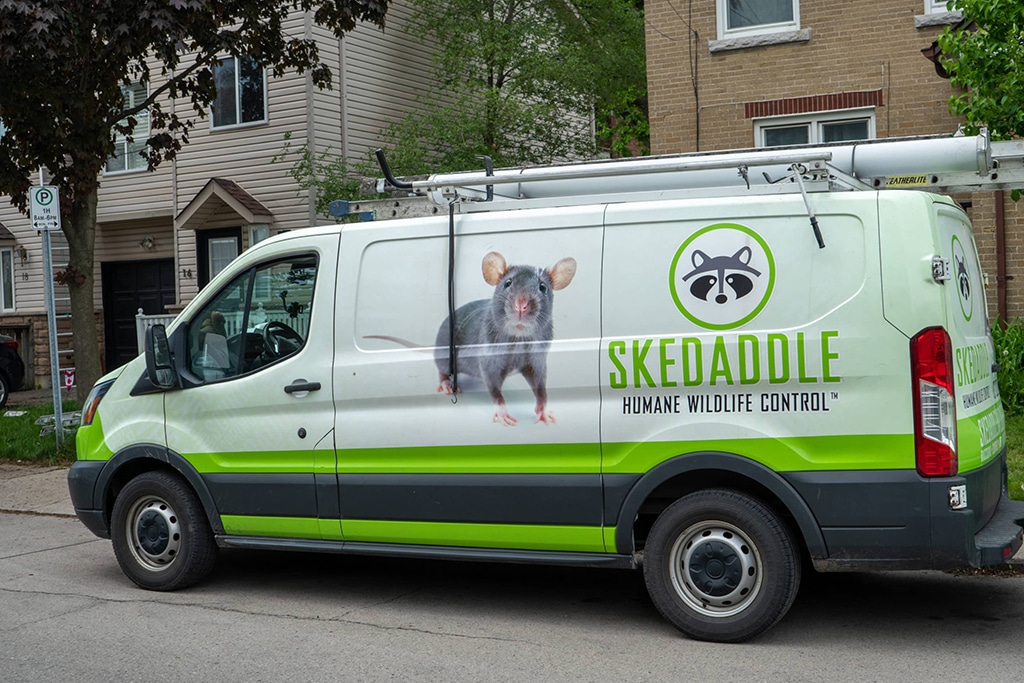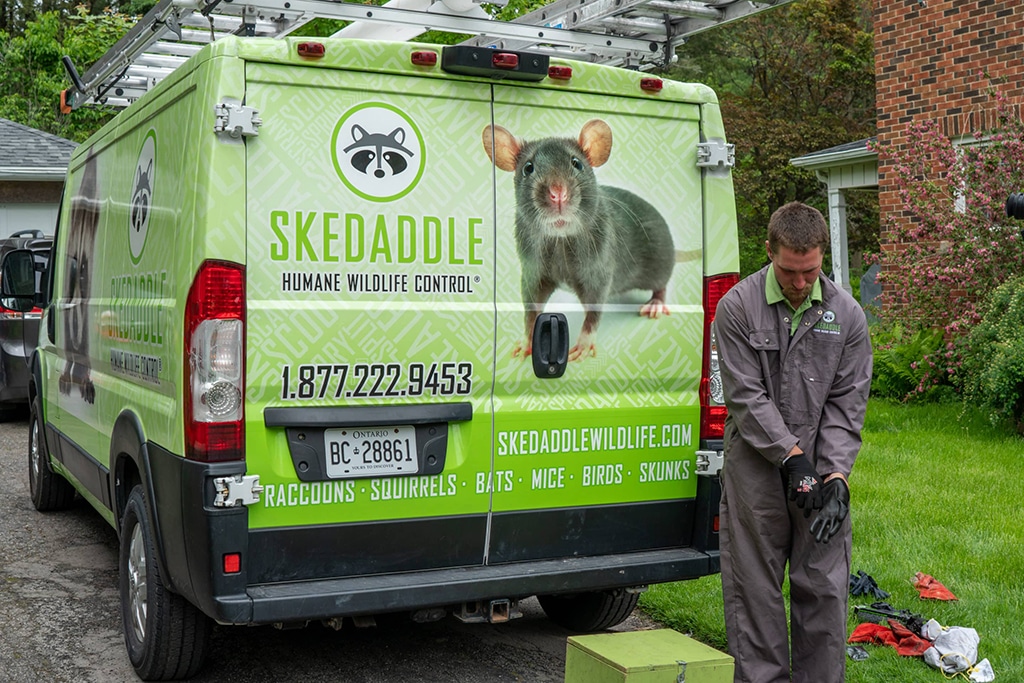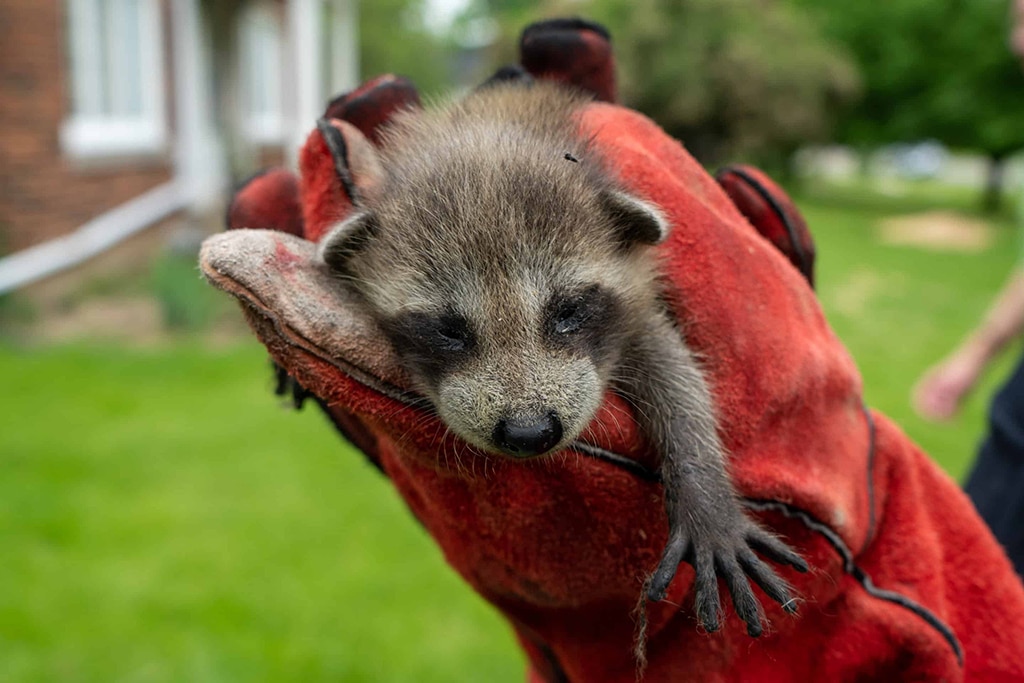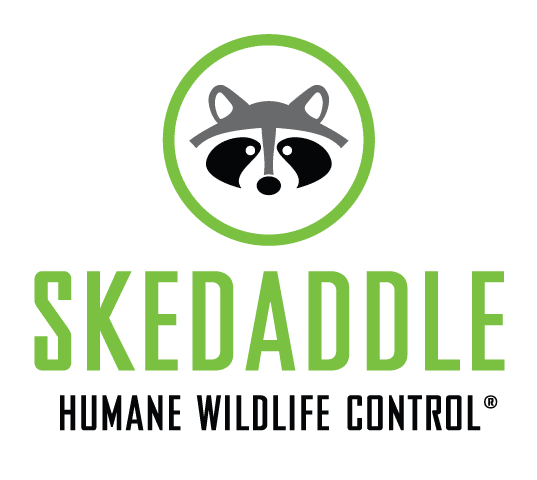How to Winterize Your House With Skedaddle
Since 1989, Skedaddle Humane Wildlife Control has effectively removed wildlife intruders from unsuspecting homeowners and implemented barriers to keep them out for good. Most of the practices of the time appeared inhumane, so Bill Dowd decided to flip the script on the industry and revolutionized new ways to kindly escort those nosey critters from the premises.
Making the call to get wild animals is something no homeowner looks forward to doing. However, our team of highly trained technicians and our dedication to service ensures that stress is removed from the equation. We aim to provide our customers with a permanent solution to wildlife intrusions.
Wildlife doesn’t care what time of year it is. If they feel like coming into your attic, they will do whatever they can to get in — and stay. So, just because we are heading toward the dead of winter doesn’t mean you can let your guard down. Below you’ll find a couple of questions about wildlife and winter:

Do all wild animals hibernate?
The short answer is no; not all wild animals hibernate. Hibernation is an automatic process in some animals when the weather cools down. Their heart rate will lower enough to conserve enough energy to survive many months without food. Some animals, like bats, enter hibernation around the time the first frost of the year occurs and remain in this state until early spring.
Other animals, like raccoons and skunks, enter a similar state called “torpor.” Torpor allows animals to conserve energy and use their body fat to keep warm. Unlike hibernation, animals in torpor may wake up during warmer days throughout the winter to search for more food or to travel to a different den.
Squirrels, mice, and non-migratory birds remain relatively active throughout the winter, spending more time in their nests during long stretches of cold weather but never entering a long-term slumber. Foxes, rabbits, and coyotes also remain active and awake throughout the winter, keeping to their dens when the weather is terrible.
How do I coexist with wildlife in my area?
Coexisting with wildlife is a simple yet critical task. The best way to coexist peacefully is to respectfully give wild animals their space. If you encounter a wild animal on a fall hike or in your neighborhood, maintain your distance and never approach or feed the animal.
Fall home maintenance is the best way to prevent wildlife from entering your home while searching for a winter den. Be sure to clean all food waste from your lawn, including fruits and vegetables from your garden. Inspect your home for signs of wildlife damage, and repair any small cracks you may find. In the event of a wildlife break-in, choose a humane home protection company like Skedaddle that uses preventative measures and ethical techniques to protect your home, and keep animals safe in the process.
What do winter dens look like?
Wildlife winter dens vary depending on the species of animal. Bats will be different from birds that are different from mice that are different from raccoons and… you get the picture. Here’s a breakdown of the different dens you may find during the darker, colder months of the year.


Bats
Whether it’s summer or winter, bats like to make themselves comfortable as high off the ground as possible. Meaning your attic or any high beam in a dark space like a barn or garage is a 5-star resort for them. However, during winter, their body temperatures drop significantly, which means they need to find a space to roost that’s very warm.
Bats can squeeze through tiny openings, e.g., the space between a brick wall and a soffit. Once inside, bats hang from the ceilings wherever they can get a good grip. They can cause wildlife harm by contaminating their roosting spot with their natural waste and germs.
Squirrels
Don’t get us wrong, squirrels are cute, but they can wreak havoc inside your home. Because they don’t hibernate, they build nests called dreys out of leaves, twigs, or sometimes paper or garbage.
Squirrels can chew on soffits, fascia, vent covers, or wherever there is a small opening by which they might get into the attic. They are known to chew on roof beams and electrical wires, causing structural damage and fire hazards.
Not only will they be making a comfortable space for themselves in your attic, but squirrels like to store their food, and that food can attract a host of other animals, so it is vital to take care of this problem the minute you discover it.
Mice
The damage mice cause is similar to the damage squirrels can do. They make nests like squirrels, but unlike their furry friends, mice are more likely to make a nest with things they find in the house, such as fabric or insulation, shredding the materials first so that the nest resembles a mound of garbage. Basements, attics, and wall voids are common sites for mouse nests.
Raccoons
Since raccoons like to take over a den abandoned by other animals, they tend to take up residence under structures like a porch or deck — old skunk dens are a favorite. But unlike skunks, raccoons are great climbers, so don’t be surprised to find them in the attic next time you go up there to pull out the box of Christmas decorations.
Raccoons have strong front paws with nimble toes and sharp claws, so they can exploit vulnerabilities in your home’s exterior to make a hole large enough to crawl through. They can rip off shingles and fascia and are intelligent enough to apply problem-solving capabilities. Be wary, however, as they can be very tenacious in going after something they want.
Wildlife-proof your home for winter
Like we said at the top, wild animals don’t take seasons off. They may be even more encouraged to find refuge inside your home during winter, especially if you live in an urban area. Spaces inside human dwellings are warm, safe from predators, and can provide a perfect nesting ground. However, wild animals aren’t house guests you want to entertain during the winter. Not only can animals be destructive, but they also carry dangerous diseases. The following simple wildlife prevention strategies will keep your property safe and free of animals as you and your family gather inside during the cold winter season.
Fill in the cracks
The first step towards winterizing your home is to walk around outside. Look for places animals could squeeze through. Don’t overlook a small opening just because skunks or raccoons can’t fit inside. Bats and mice can make their way through the tiniest of cracks; all these animals need is an opening about the width of a crayon.
Holes less than a quarter inch can also be a potential problem. Rodents are gnawing experts and may use their sharp teeth to make any opening wider. Don’t allow them to chew open an entry point. Carefully inspect the following areas for gaps, and use caulking to seal openings in:
- Garage doors
- Exterior doors
- Windows
- Foundation and siding
- Exterior walls
- Roof tiles
Along with sealing gaps, you also want to install screens over vents and chimneys.
While these measures effectively keep animals out, they don’t do much if critters are already inside, yukking it up. Chew marks, droppings, and scratching noises are all signs your home has an unwelcome visitor. If you notice signs of entry, call for wildlife removal services immediately.
Secure your outdoor living area
Imagine opening your grill at the first sign of spring only to find a squirrel or squirrels nesting inside. While winterizing your home, don’t overlook outdoor furniture and grills. Grills should be covered and secured with a weather-proof tarp.
Remove outdoor furniture cushions from your chairs so their insides don’t become a cozy nest. Store such soft items in a securely sealed deck box or shed. Firmly cover tables, chairs, and outdoor fire pits that go unused in the winter. Make sure also to remove any potted plants. Animals like rodents may burrow into the dirt to stay warm. Protecting your patio for the winter makes for an animal-free spring cleaning.
And don’t forget about other outer structures
Animals don’t care if you have a decked-out she-shed or are simply storing an old lawnmower. If there is an outdoor structure in your yard, critters want inside. Secure any exterior dwelling that could serve as a shelter. Sheds should be inspected for cracks and holes, just like your home. After you’ve sealed the exterior, clean the interior and remove any food or seed that could attract wildlife. Not only will your shed be tidy come springtime, but it will also be rodent-free. Animals love to turn a mess into their comfy winter abode.
It’s only January, and there is still time left on this winter calendar. Keep the woodland creatures outside where they belong in the wintertime. Complete this checklist each year; you can deter animals all season long. If you need help winterizing your home against wildlife, give us a call.
 AVAILABLE TERRITORIES
AVAILABLE TERRITORIES 720.501.6730
720.501.6730